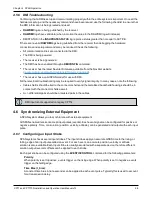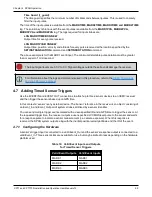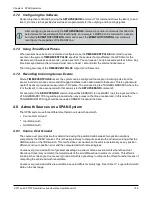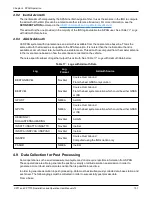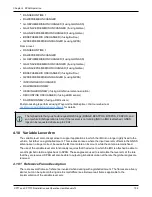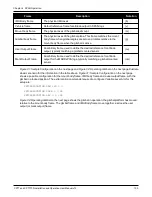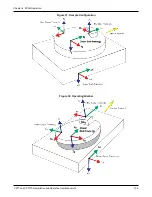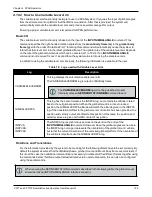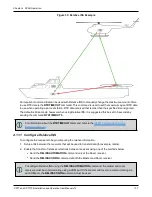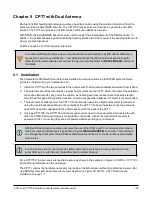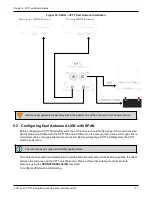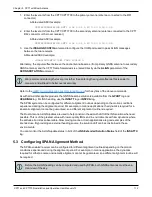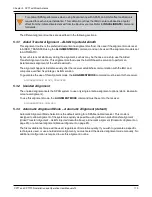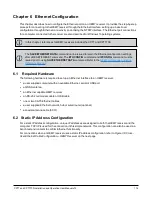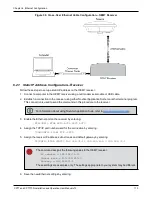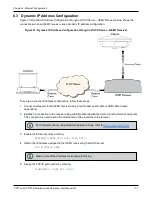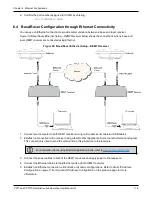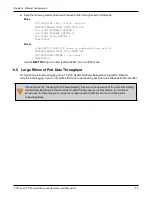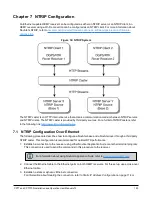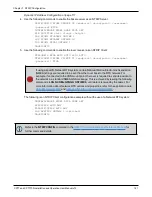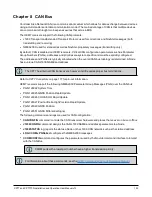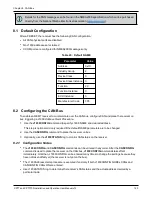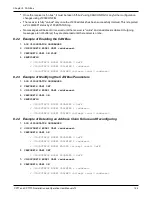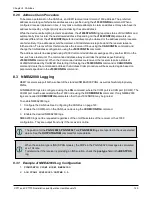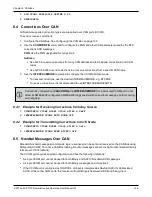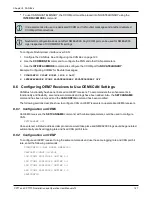
Chapter 5 CPT7 with Dual Antenna
CPT7 and CPT7700 Installation and Operation User Manual v12
112
1. Enter the lever arm from the CPT7/CPT7700 to the primary antenna (antenna connected to the RF1
connector).
Abbreviated ASCII example:
SETINSTRANSLATION ANT1 0.54 0.32 1.20 0.03 0.03 0.05
2. Enter the lever arm from the CPT7/CPT7700 to the secondary antenna (antenna connected to the CPT7
RF2 connector or the rover receiver).
Abbreviated ASCII example:
SETINSTRANSLATION ANT2 0.54 2.32 1.20 0.03 0.03 0.05
3. Use the
INSALIGNCONFIG
command to configure the COM ports used to pass ALIGN messages
between the two receivers.
Abbreviated ASCII example:
INSALIGNCONFIG COM1 COM2 230400 5
Alternately, the angular offset between the dual-antenna baseline (from primary GNSS antenna to secondary
GNSS antenna) and the CPT7 frame forward axis is entered directly via the
ALIGN
parameter of the
SETINSROTATION
command.
We recommend entering the lever arms rather than entering the angular offset as this is easier to
measure and will lead to better overall accuracy.
Refer to the
OEM7 Commands and Logs Reference Manual
for the syntax of the above commands.
As with all ALIGN-capable products, the GNSS baseline solution is available from the
GPHDT
log and
HEADING2
log. For INS heading, use the
INSATT
log or
INSPVA
log.
The SPAN system can be configured for different alignment routines depending on the motion conditions
experienced during the alignment period. For example, in marine applications, the dynamics required for a
kinematic alignment cannot be guaranteed, so a different alignment routine is required.
The Dual Antenna ALIGN updates are used to help constrain the azimuth drift of the INS solution whenever
possible. This is of the greatest value with lower-quality IMUs and in environments with low dynamics where
the attitude error is less observable. Slow moving marine or train applications are good examples of the
intended use. By providing an external heading source, the solution drift can be constrained in these
environments.
You can monitor the ALIGN update status in bit 4 of the
INS Extended Solution Status
field of the
INSATTX
log.
5.3 Configuring SPAN Alignment Method
The SPAN-enabled receiver can be configured for different alignment routines depending on the motion
conditions experienced during the alignment period. For example, in marine applications, the dynamics
required for either a coarse or kinematic alignment cannot be guaranteed, so a different alignment routine will
be required.
Before the ALIGN heading can be computed and used by SPAN, both GNSS antennas must have a
clear view of the sky.

